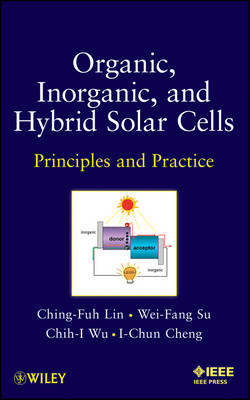Provides detailed descriptions of organic, inorganic, and hybrid solar cells and the latest developments in the quest to produce low-cost, long-lasting solar cells What will it take to transform solar energy from an important alternative source to a truly competitive and, perhaps, dominant one? Lower cost and longer life. Organic, Inorganic, and Hybrid Solar Cells: Principles and Practice provides in-depth information on the three types of existing solar cells, giving readers a good foundation for evaluating the technologies with the most potential for competing with energy from fossil fuels. Featuring a Foreword written by Nobel Peace Prize co-winner Dr. Woodrow W.
Clark, this timely and comprehensive guide: * Focuses on the realization of low-cost and long-life solar cells study and applications * Reviews the properties of inorganic materials, primarily semiconductors * Explores the electrical and optical properties of organic materials * Discusses the interfacing of organic and inorganic materials: compatibility of deposition, the adhesion problem, formation of surface states, and band-level realignment * Provides a detailed description of organic-inorganic hybrid solar cells, from the basic principles to practical devices * Introduces a sandwiched structure for hybrid solar cells, which combines a far lower production cost than inorganic solar cells while stabilizing and extending the life of organic material far beyond that of organic solar cells Organic, Inorganic, and Hybrid Solar Cells: Principles and Practice is a first-rate professional reference for electrical engineers and important supplemental reading for graduate students in related areas of study.
- ISBN10 1118168534
- ISBN13 9781118168530
- Publish Date 5 October 2012
- Publish Status Active
- Publish Country US
- Imprint John Wiley & Sons Inc
- Format Hardcover
- Pages 288
- Language English
